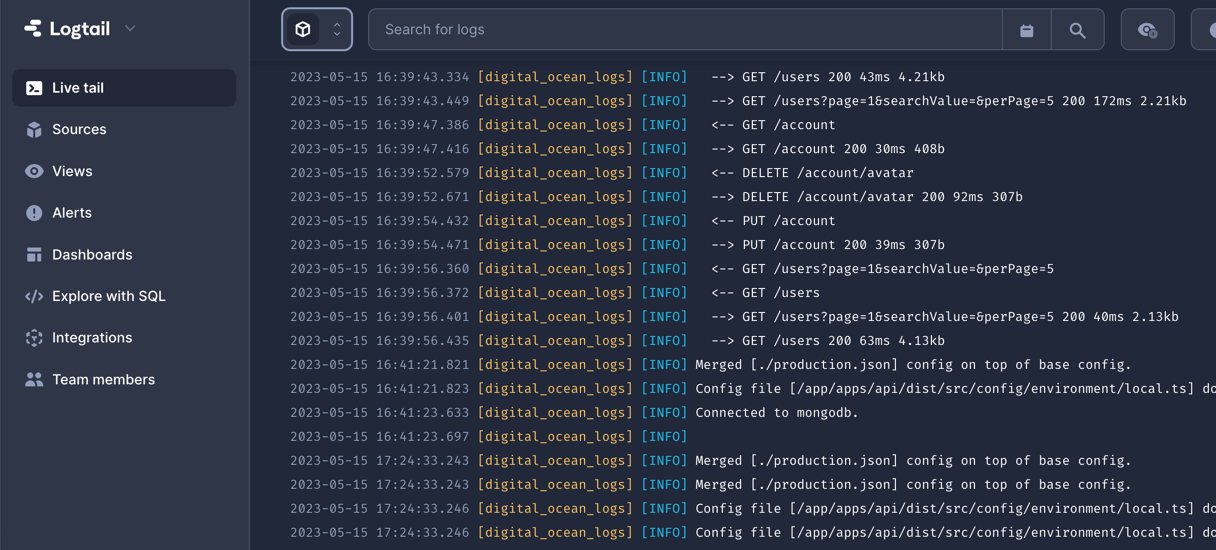Setup project
First, initialize your project. Typenpx create-ship-app init in the terminal then choose desired build type and Digital Ocean Apps as a cloud service provider.
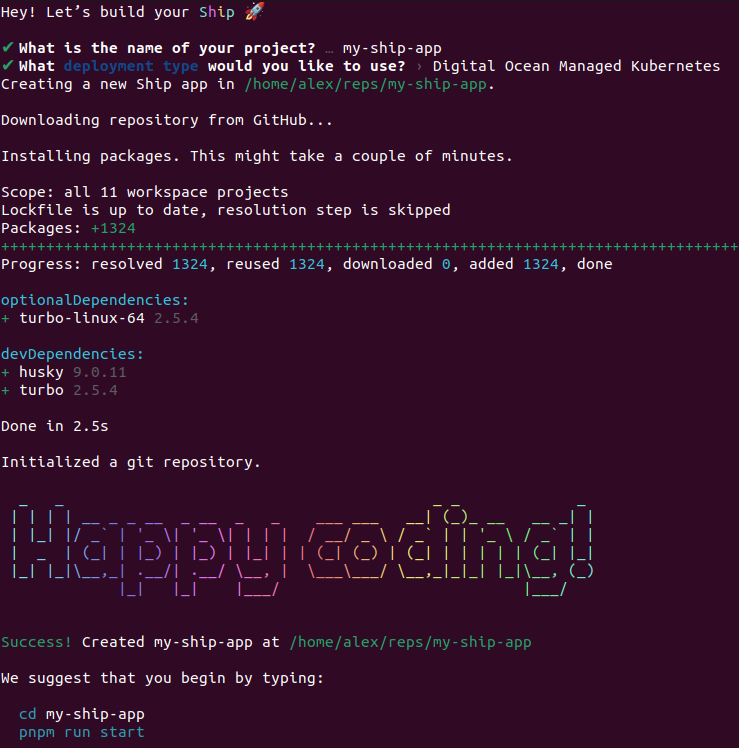
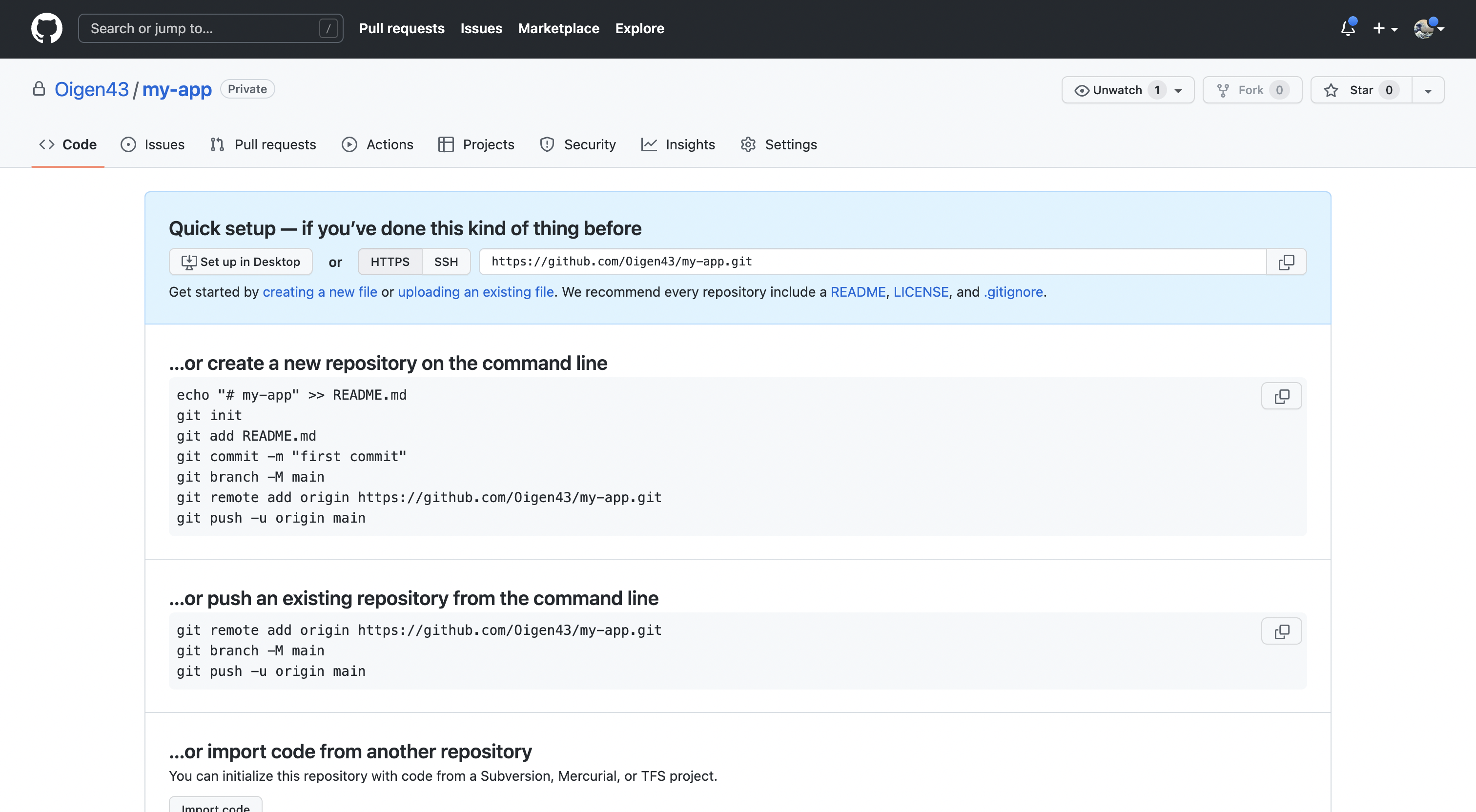
MongoDB Atlas
Navigate to MongoDB Atlas, sign in to your account and create a new database.Database creation
- Select the appropriate type. Dedicated for a production environment, shared for staging/demo.
- Select provider and region. We recommend selecting the same or closest region to the DO application.
- Select cluster tier. Free M0 Sandbox should be enough for staging/demo environments. For production environment we recommended selecting the option that supports cloud backups, M10 or higher.
- Enter cluster name
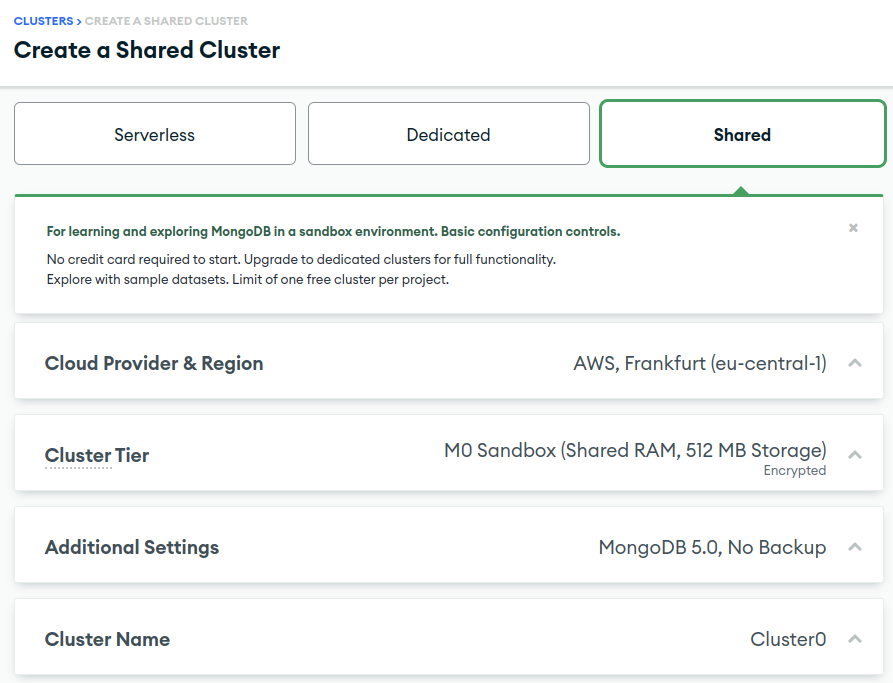
Security and connection
After cluster creation, you’ll need to set up security. Select the authentication type (username and password) and create a user.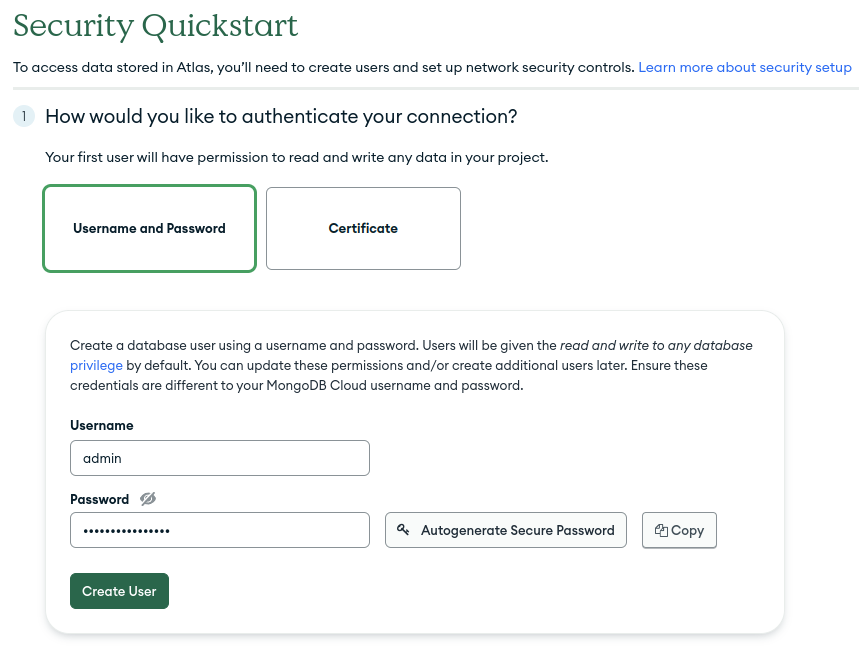
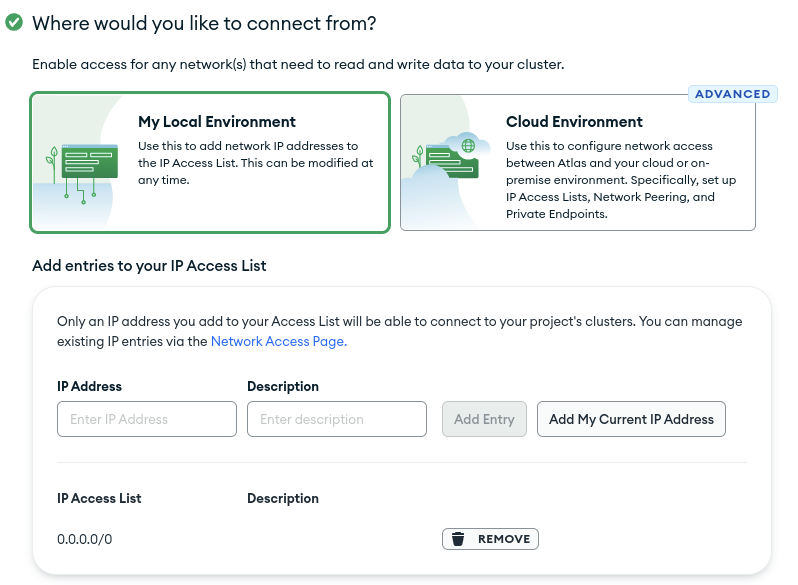
connect button.

Connect your application option. Choose driver and mongo version, and copy connection string. Don’t forget to replace <password> with your credentials.
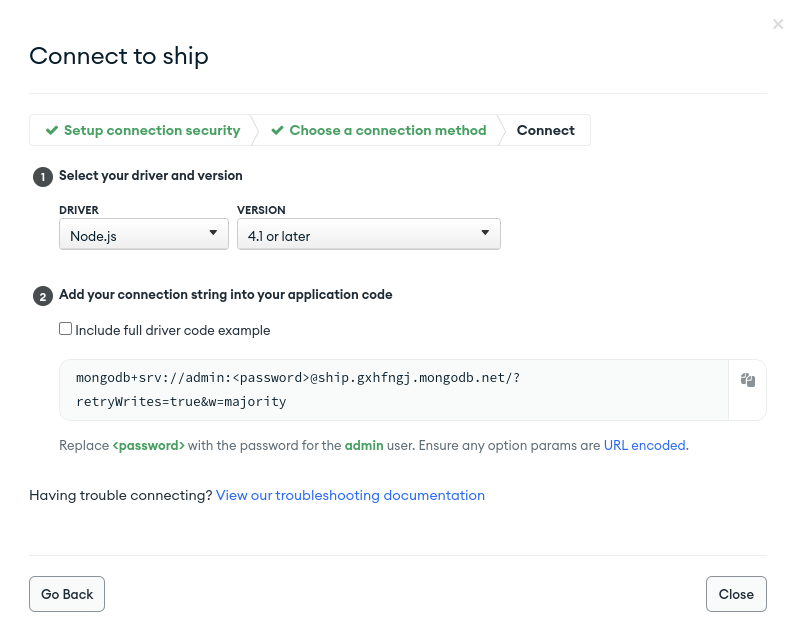
Before moving to production, it’s crucial to set up MongoDB backup methods.This ensures that you can reliably restore your data in the event of unforeseen circumstances.
Redis Cloud
Navigate to Redis Cloud and create an account. Select cloud provider and region, then pressLet's start free to finish database creation.
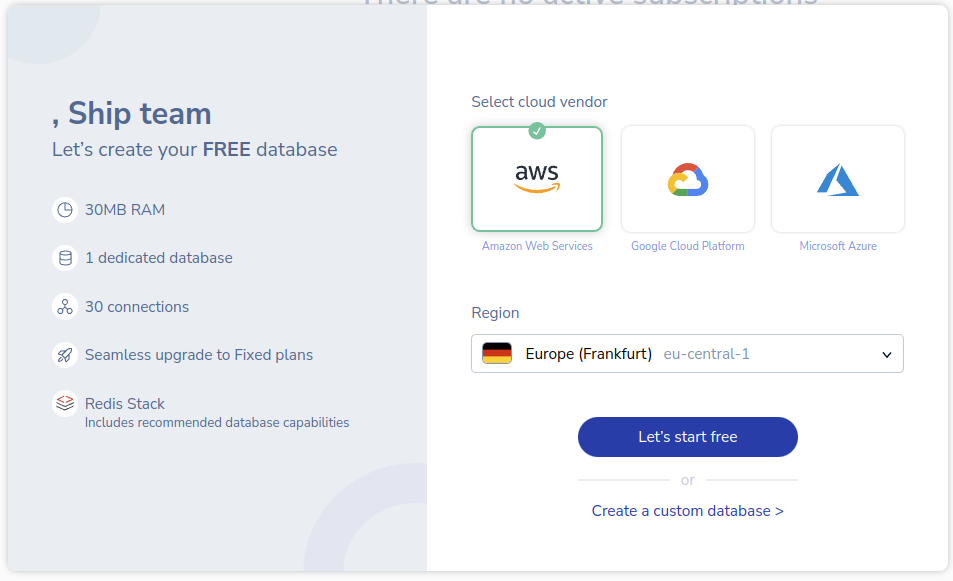
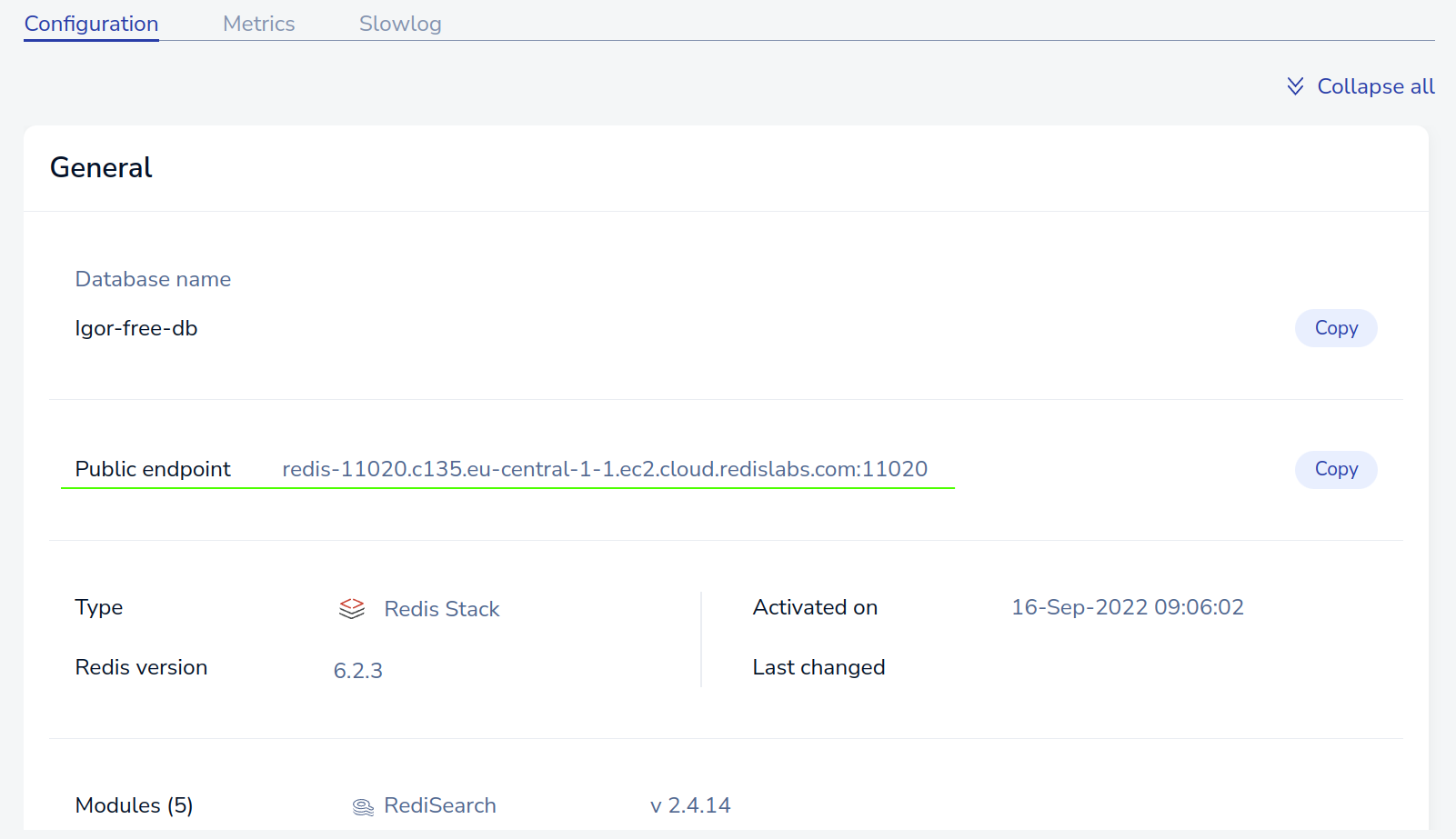

redis://:<password@<public-endpoint>. Save this value. It will be needed later when creating the app in Digital Ocean.
Environment variables
TheAPP_ENV environment variable is typically set based on the environment in which the application is running.
Its value corresponds to the specific environment, such as “development”, “staging” or “production”.
This variable helps the application identify its current environment and load the corresponding configuration.
For the web application, by setting the environment variable APP_ENV,
the application can determine the environment in which it is running and download the appropriate configuration file:
| APP_ENV | File |
|---|---|
| development | .env.development |
| staging | .env.staging |
| production | .env.production |
.env file that houses its environment-specific configuration.
This file typically contains variables like API keys, secrets, or other sensitive information.
To ensure security, it’s crucial to add the .env file to the .gitignore file,
preventing it from being tracked and committed to the repository.
So just specify the environment variables that will contain the values of your secrets.
For example, if you have a secret named API_KEY,
create an environment variable named API_KEY and set the value of the corresponding secret for it.
Digital Ocean via Pulumi
Pulumi is an open-source Infrastructure as Code (IaC) platform that allows developers to define and provision cloud infrastructure using familiar programming languages.Instead of using domain-specific languages or YAML templates, Pulumi leverages existing languages like TypeScript, Python, Go, and C#. Go to the
/deploy directory at the root of your project and proceed to the next steps:
1
Pulumi CLI
Ensure you have Pulumi CLI installed.
After installing, verify everything is in working order by running the pulumi CLI:
After installing, verify everything is in working order by running the pulumi CLI:
2
Pulumi Login
Login in pulumi for managing your stacks:
3
DigitalOcean Tokens and Keys
Create your Personal Access Token and Access Keys for DigitalOcean
4
Configuring Tokens and Keys
Add DigitalOcean Personal Access Token and Access Keys to your configuration file: Insert the following variables at the end of the configuration file:To reflect the changes in the bash, either exit and launch the terminal again.Or use the command:
.zshrc or .bashrcFirst you’ll need to enter the .zshrc or .bashrc file in editing mode:5
GitHub apps
Grant DigitalOcean access to your GitHub repository using this link.
6
Stack initialization
Initialize your stack using the command:Substitute
Replace
{project-name} with the actual name of your project and make sure to update it in Pulumi.yaml file. Replace
{environment} with the desired environment: staging or production values are allowed.7
App environments
Duplicate the Populate the new file with the necessary environment variables.
.env.example file to create a new environment-specific file using the command:Ensure that you set the necessary variables in your web application.
Edit the .env files accordingly and remember to push these changes to your remote repository.
8
Installing dependencies
Install the required dependencies using the command:
9
Resources creating
To create the resources in the initialized stack, execute the command:
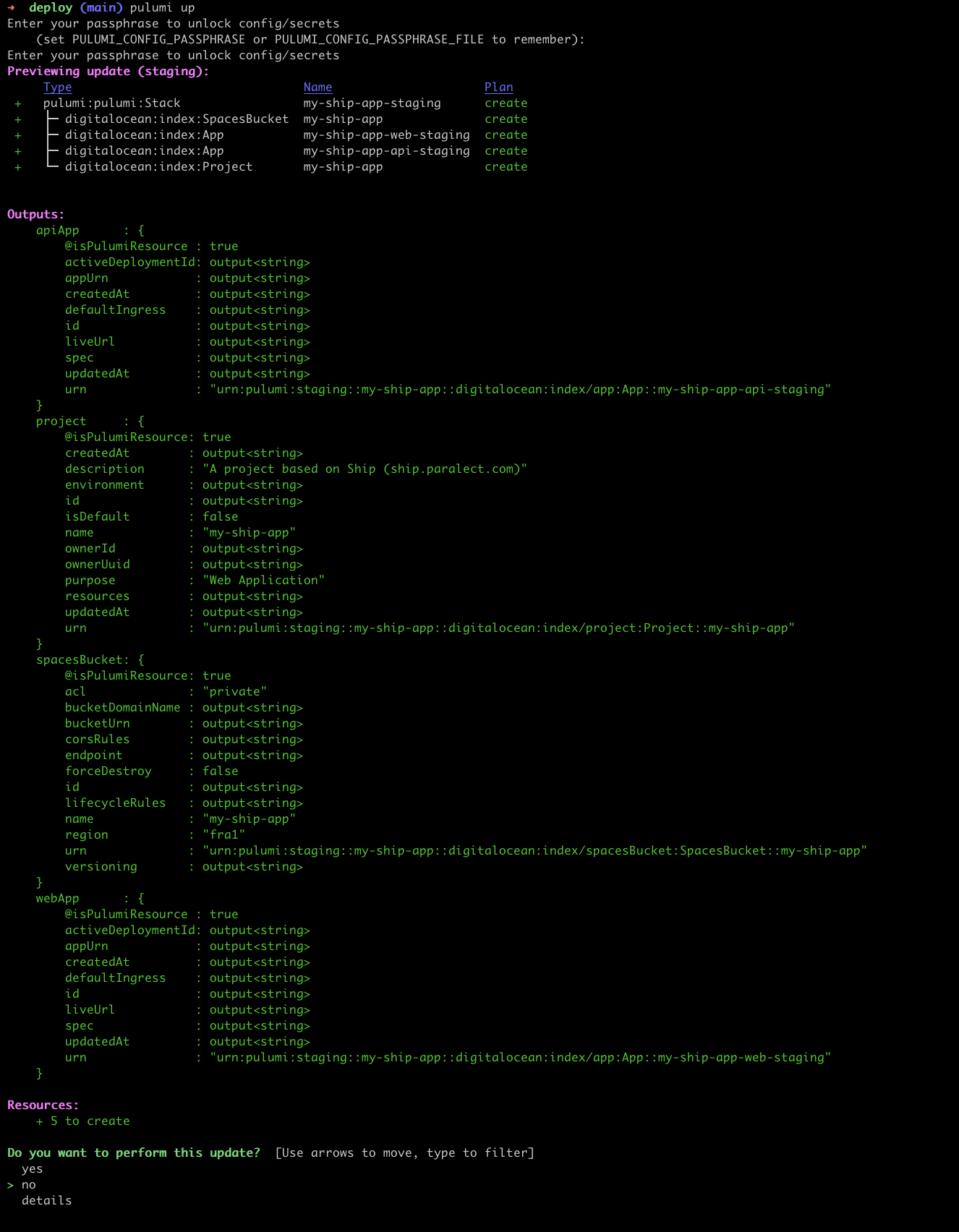
Cloudflare
Navigate to your Digital Ocean application and openSettings tab.
Navigate to Domains row to open domain settings and copy starter domain of application.
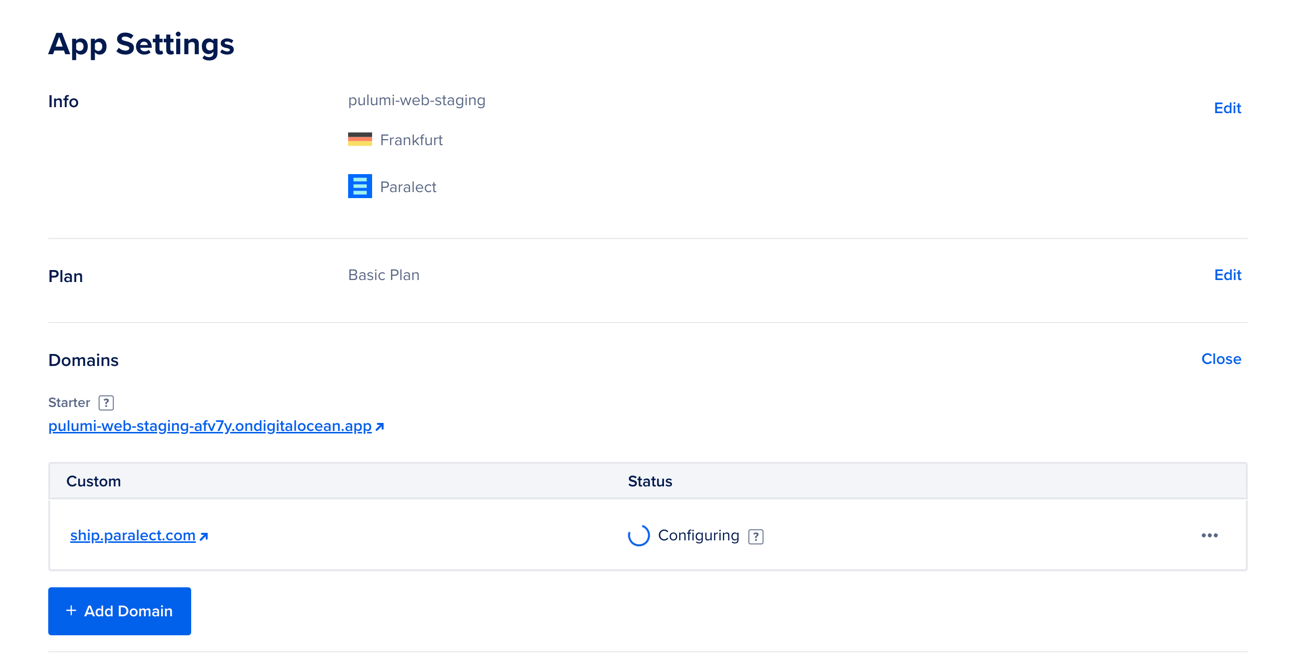
- Go to
DNStab and create a new record. - Click
Add record. Select typeCNAME, enter domain name (must be the same you entered in digital ocean settings) and paste alias intotargetfield. Make sureProxy statustoggle enabled. - Save changes
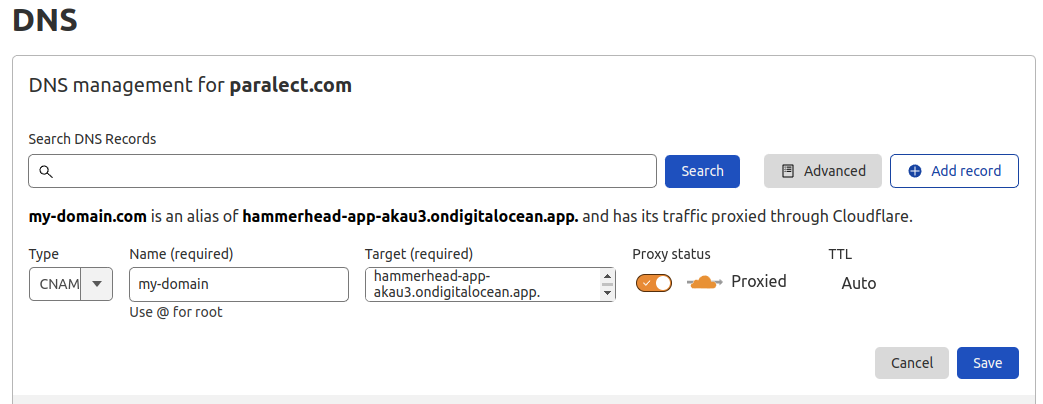
GitHub Actions
You can find two GitHub actions in the.github/workflows folder, responsible for triggering deployment when you push changes in your repository. If you chose frontend or backend on the initialization step, you’ll have one github workflow for the selected application type.
These actions require a Digital Ocean Personal Access Token and application ID.
Respectively these are DO_ACCESS_TOKEN and DO_API_STAGING_APP_ID/DO_WEB_STAGING_APP_ID/DO_API_PRODUCTION_APP_ID/DO_WEB_PRODUCTION_APP_ID.
Next, navigate to the Apps tab in the left sidebar and open your Digital Ocean application. You can find the id of your application id in the browser address bar.

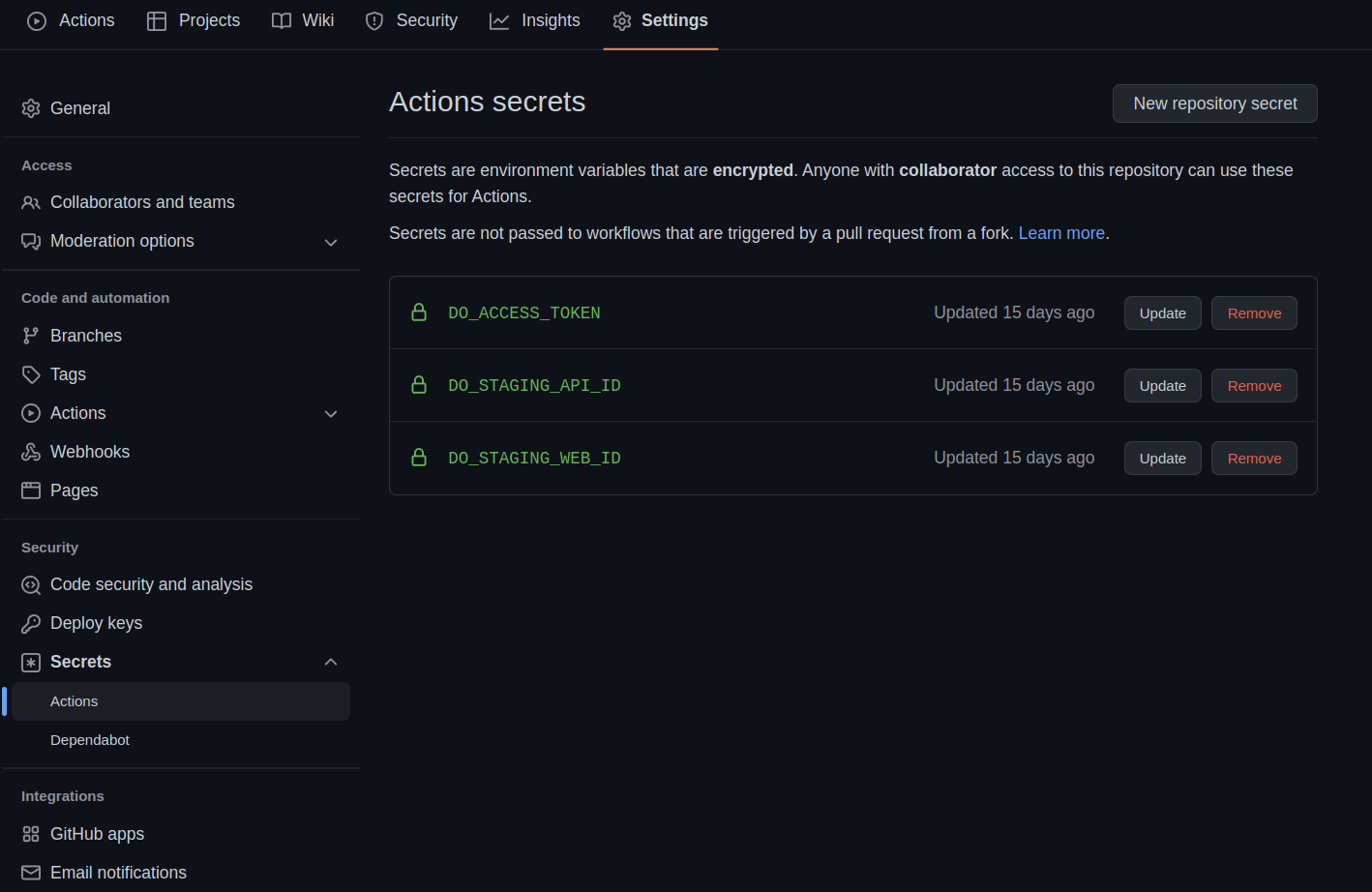
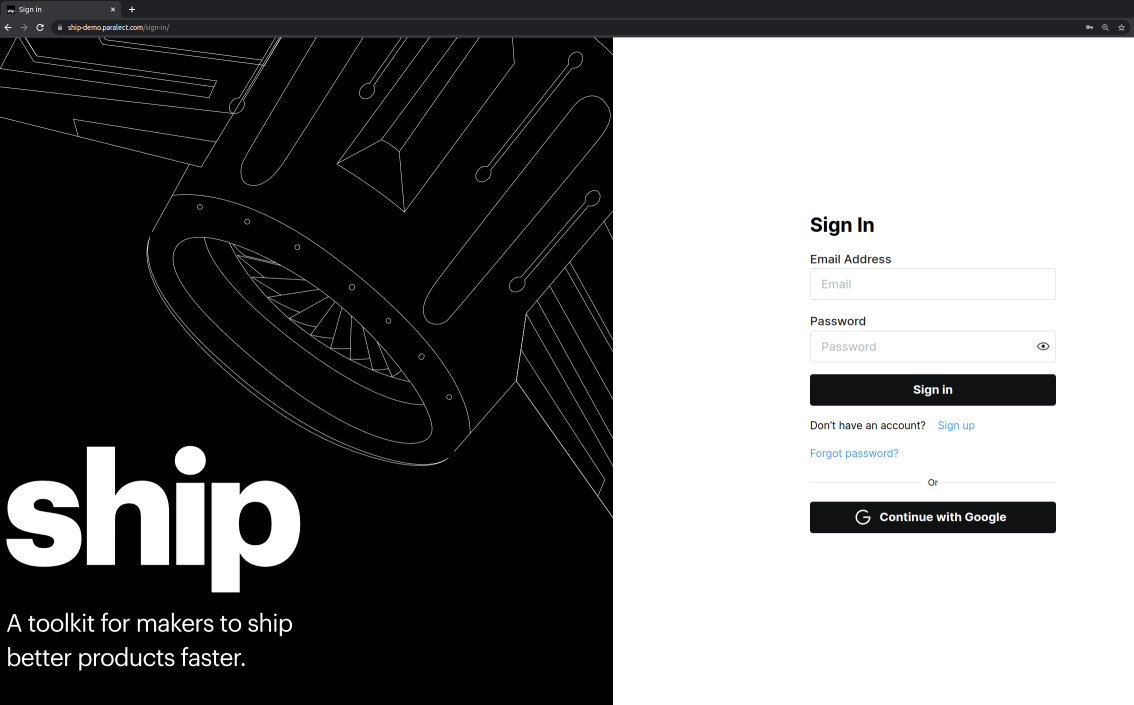
Logging (optional)
Build-in
Digital Ocean has built-in logs in raw format. It will gather all data that your apps will produce. In order to view them, follow these steps:- Log in to your Digital Ocean account.
- Click on the Apps tab in the left-hand navigation menu.
- Click on the name of the app you want to view the logs for.
- Click on the Runtime Logs tab in the app dashboard.
- You will see a list of logs for different components of your app. Click on the component you want to view the logs for.
- You can filter the logs by time, severity, and component. Use the drop-down menus provided to select your filter criteria.
- You can also search for specific keywords in the logs by using the search bar at the top of the page.
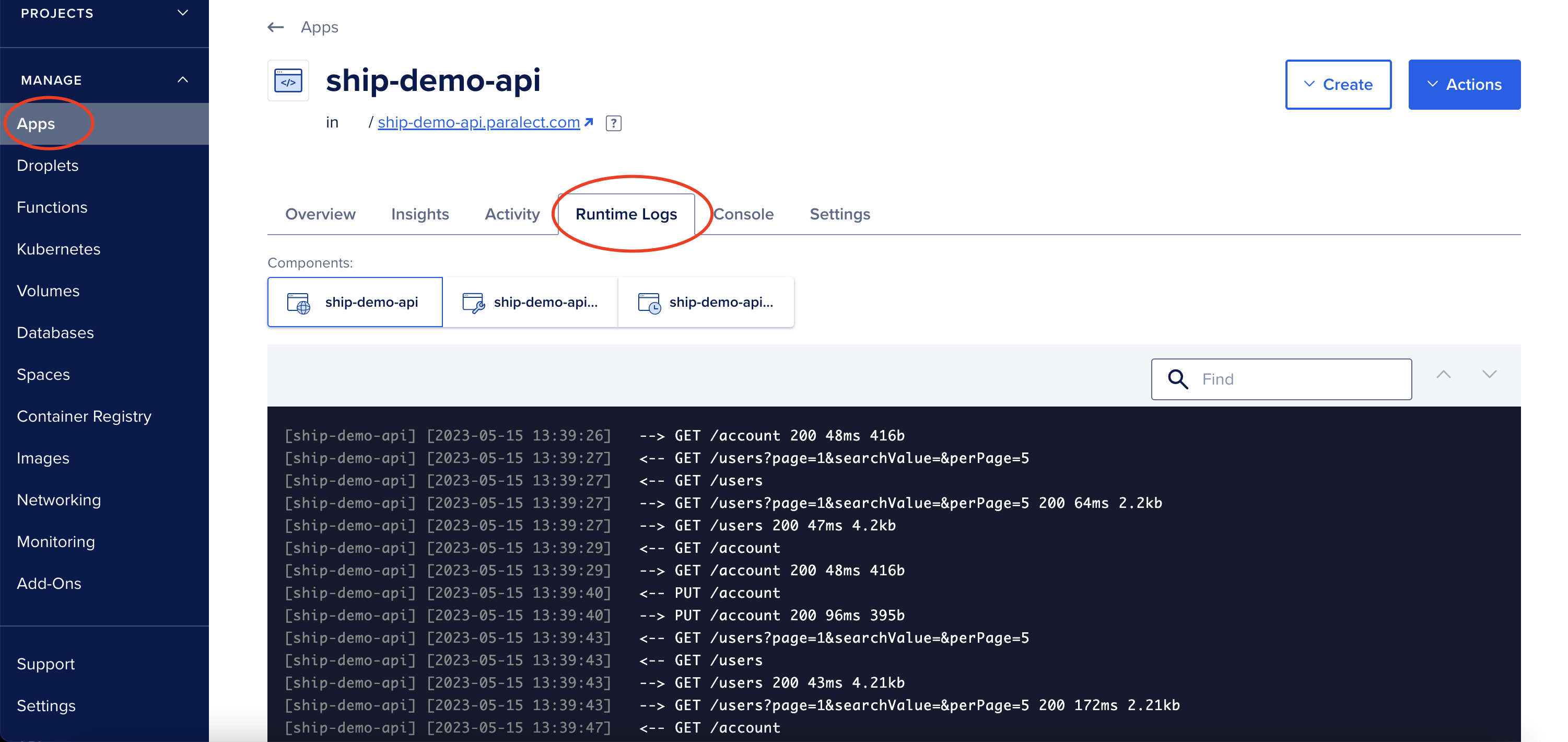
Integrations
Currently, Digital Ocean Apps supports only 3 integrations: PaperTrail, Logtail and Datadog. You can find detailed instructions on how to set up these logs at this link.Example Integration Logtail
To configure Logtail follow these steps:- Create account on Logtail
- Open Sources on the left sidebar.
- Create new source by clicking “Connect source” button
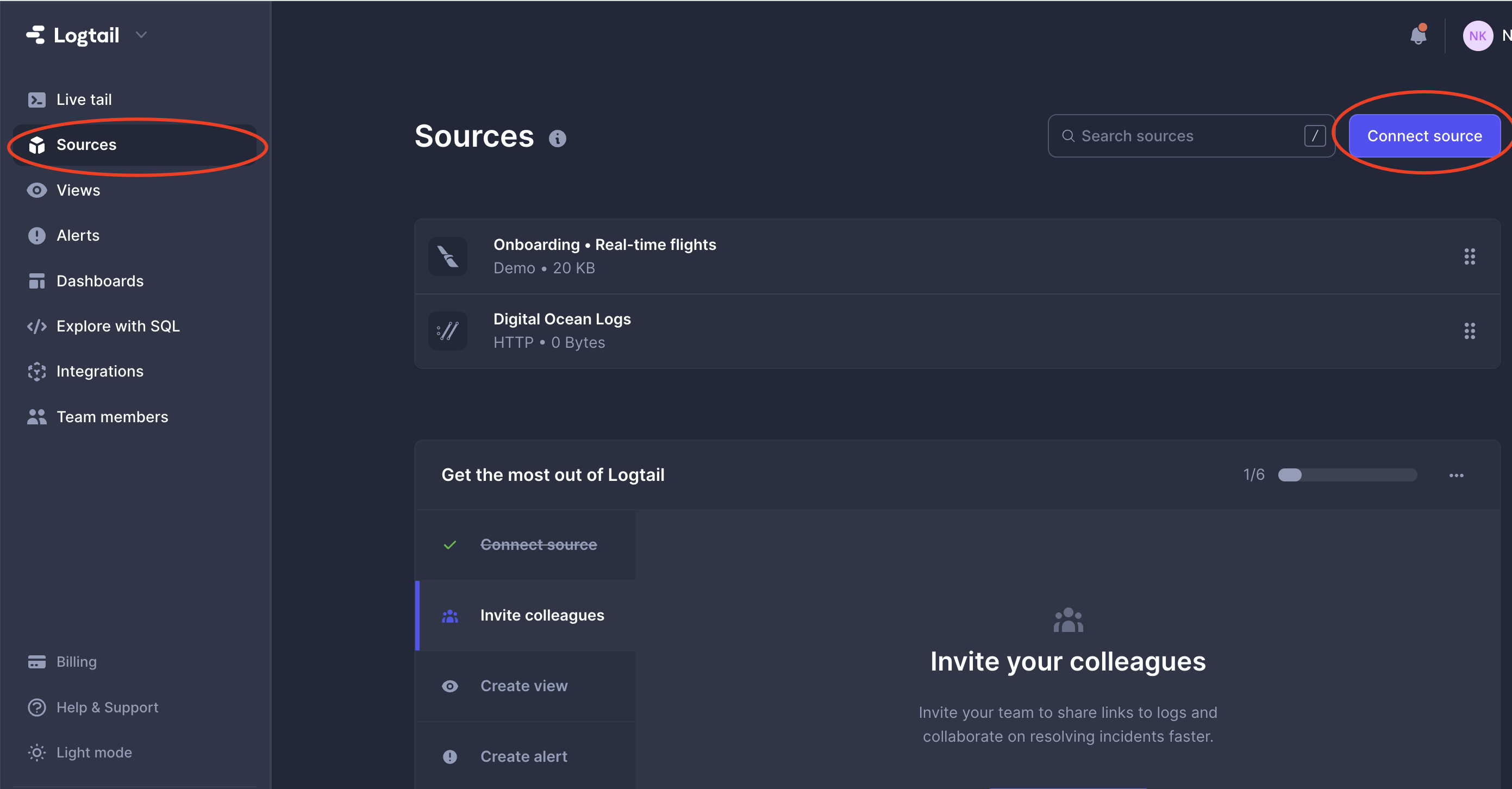
- Select HTTP source and specify name for this connection
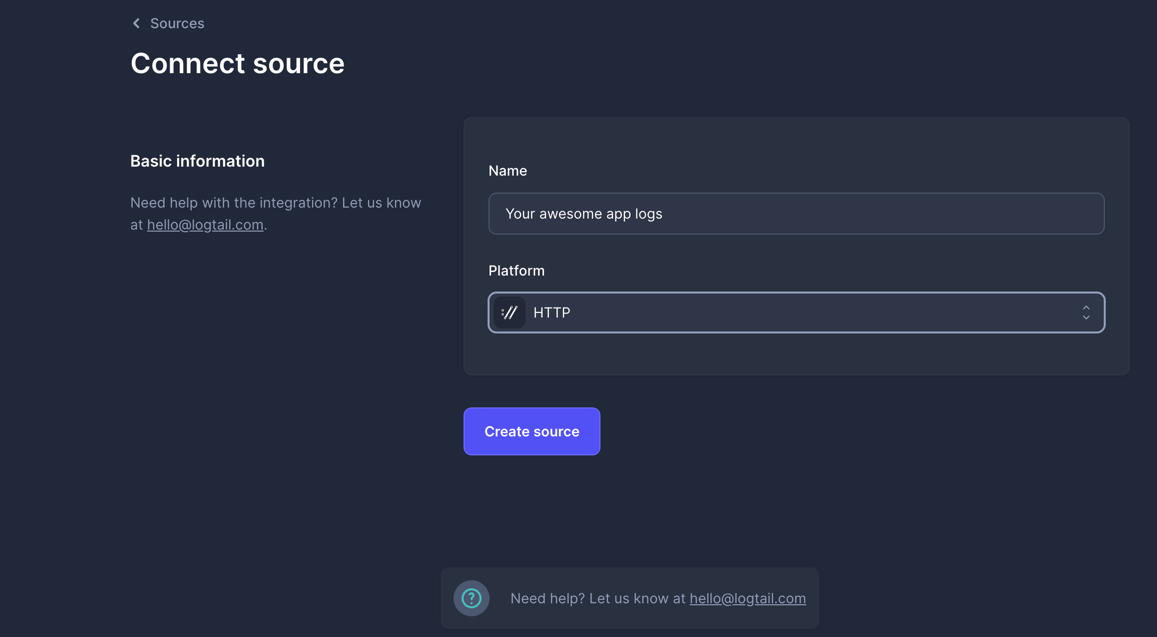
- Copy source token
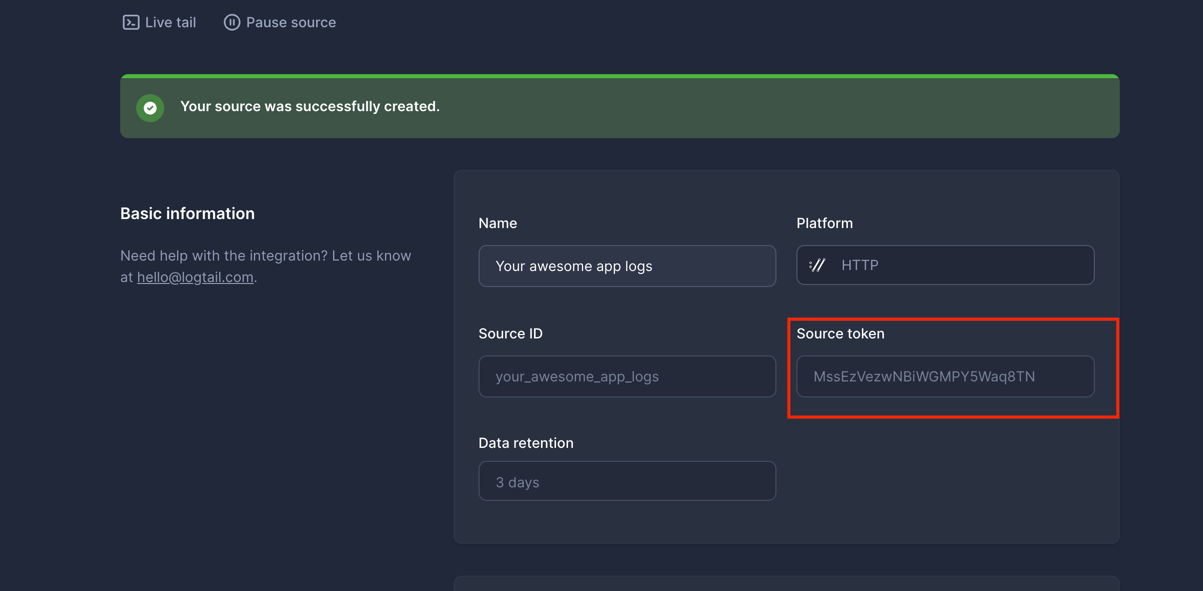
- Open Digital Ocean Apps
- Select Settings tab for your application
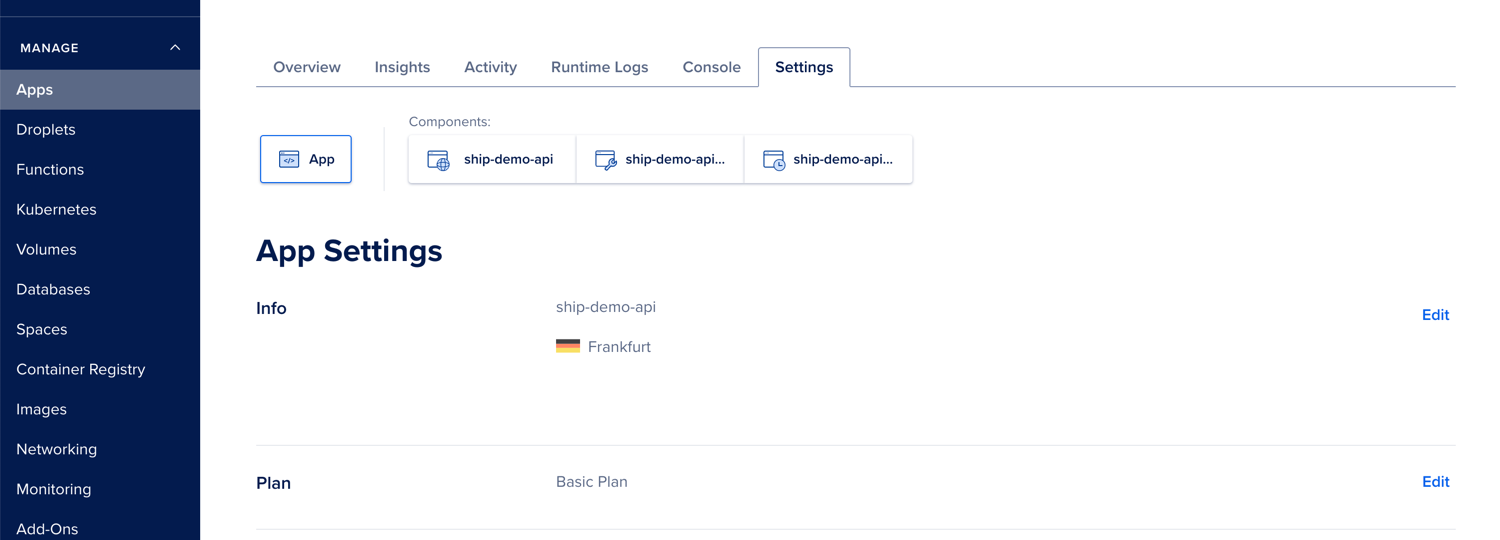
- Select Log Forwarding and then press “Add Destination”

- Fill information with token that we retrieved from Logtail
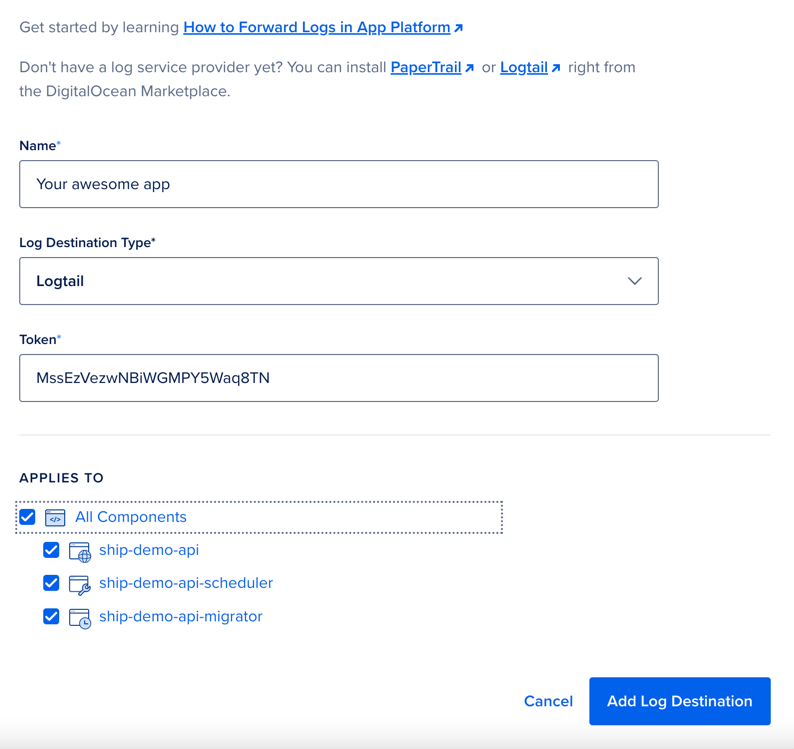
- That’s it! In couple minutes your app will send the latest logs to Logtail
